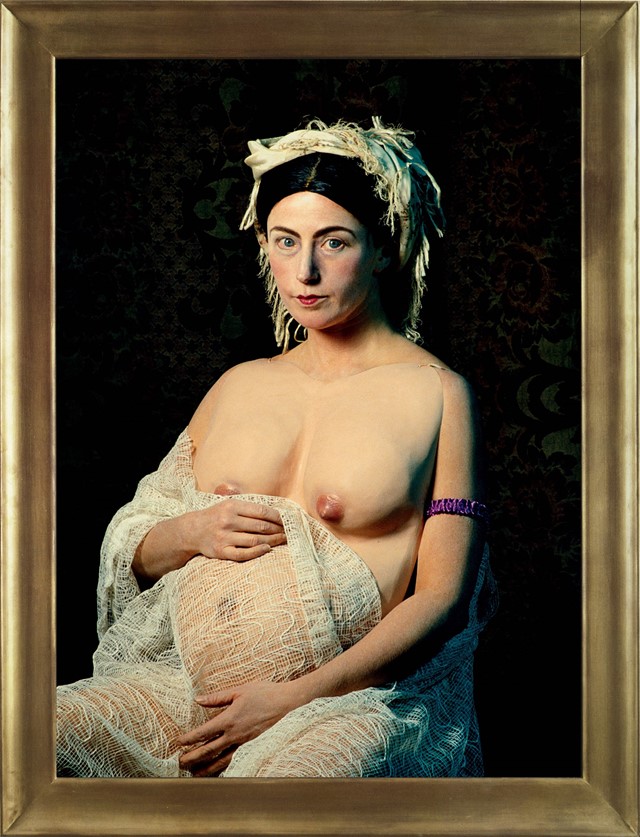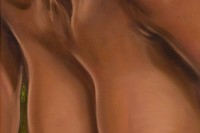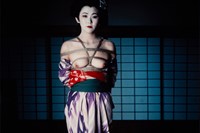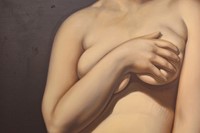Featuring work by Cindy Sherman, Robert Mapplethorpe, Louise Bourgeois and more, a new exhibition at the Venice Biennale 2024 examines the fraught history of breasts throughout cultures and traditions
Breasts are perhaps the most politicised and culturally complicated part of the human body. They are seen as nurturing and life-giving; also a source of shame, pleasure and pain. Throughout art and fashion, they have consumed creative thought for centuries, whether exposed, covered, hoisted up or bound. Breasts, a new exhibition at Palazzo Franchett, recently opened as part of the 60th Venice Biennale, explores this and more.
Curated by Carolina Pasti, the show holds together many inconsistencies and contractions, moving through depictions of breasts as sacred, humorous, tantalising, and downright freaky. “My idea was to portray the history of breasts throughout cultures and traditions,” says Pasti. “But I also want the audience to leave the show thinking about other topics, such as breastfeeding, breast cancer awareness … and to do this in a playful way.”
Our ideas of breasts are usually kept separate; new mothers’ breasts, for example, are seen very differently to those of sex workers. In bringing so many connotations together, Pasti plays with viewers’ discomfort and encourages their own projections. The exhibition opens with an image of the Virgin Mary, whose story inherently denies the reality of the female body and its workings. While many paintings of Mary avoid showing her breastfeeding to maintain an idea of sanctity, Bernardino Del Signoraccio’s Madonna dell’ Umiltà (c. 1460-1540) pictures her with one breast out in a loving embrace with the infant Jesus. Opposite this work is Cindy Sherman’s Untitled 1 #205 (1989) from her History Portraits series, in which the artist poses as various female protagonists from Renaissance paintings.
Sherman’s photograph is inspired by Raphael’s La Fornarina (1518-19), showing the artist partly covered in a sheer white veil. The image plays with the kind of purity seen in Signoraccio’s painting of Mary, though everything feels wrong. The artist’s obviously artificial breasts and pregnant stomach both hide and reveal the body, covering up her own nudity while presenting a facade that feels just as exposing. Here, the breasts appear bare and shocking, even though we know they aren’t real. “It’s very provocative,” says Pasti. “She’s using elements that would be seen as common, or not very expensive, and her face is very still and straight towards the viewer.”
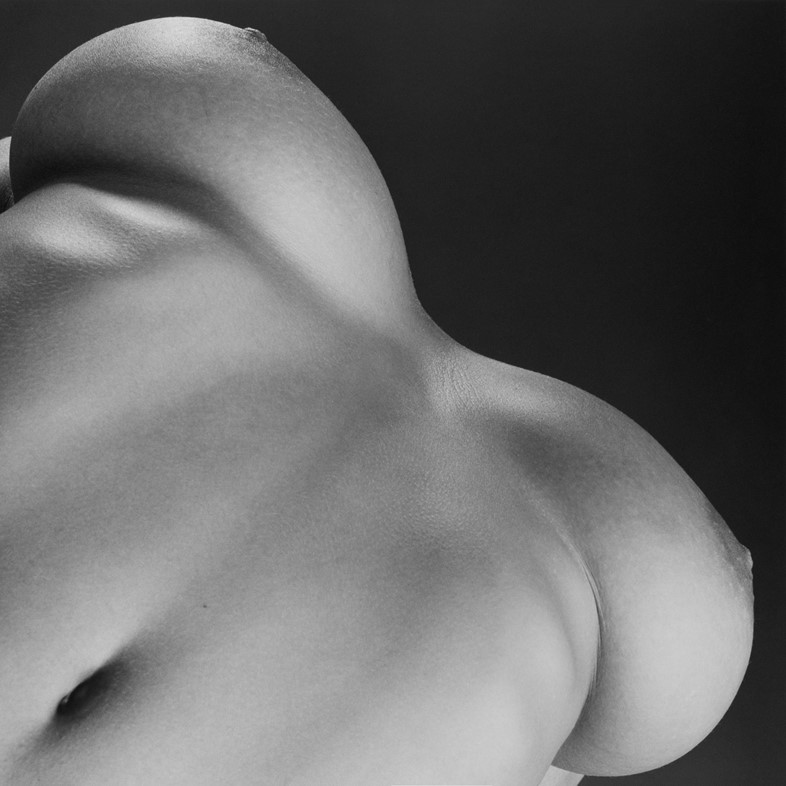
Laure Prouvost similarly treads a fine line between nurture and repulsion with Four for See Beauties (2022). In the video, moving imagery of her own and friends’ babies interacting with breasts is intercut with shots of slimy sea creatures. The soundtrack is watery and womb-like, evoking a heightened closeness with the body. It calls to mind the experience of pregnancy and breastfeeding, which can be felt as both deeply intimate and terrifyingly alien.
Elsewhere in the exhibition, breasts are exaggerated and warped to surreal effect. In Salvador Dalí’s Nude with Snail Breasts (1967), a naked woman is shown with two giant molluscs protruding from her chest. In the same room, breasts are reshaped to highlight their resilience, with Charlotte Colbert’s Miniature Mastectomy Mameria (2021) and Prune Nourry’s Eil Nourricier #6 (2021) eschewing the tradition of male desire towards the breast in art and highlighting its power in other ways. “I wanted to present very small works in this room in a Wunderkammer kind of way,” says Pasti. “Nourry had breast cancer when she was 31, so it’s about the illness but also power, and subverting something that feels fragile.”
There are moments that trigger broader conversations, such as Jacques Sonck’s photographs of a bare male and older female chest, which invite the audience to consider which breasts feel acceptable to look at and which are expected to be covered up. “There is this intimacy, and also this wonder,” says Pasti of Sonck’s work. “I like that in one there is a male torso showing but, in the background, there is a woman covering her breasts. It was very important for me to also include male torsos.”
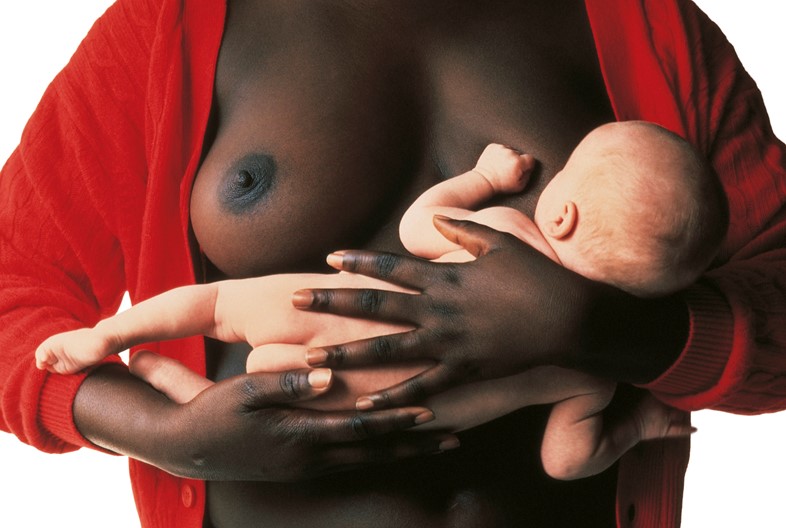
While many of the works invite viewers to look, the sense of touch is also considered. Aurora Pellizzi’s The Kiss (2022) depicts two breasts formed from hand-felted wool. While their textures are very different to the fleshiness of the body, they invite a similar urge to reach out and grab. Allen Jones’ fetishistic Cover Story 2/4 (2021) takes the opposite tack, rendering an idealised female form in cold brass; the message here being, “Look but don’t touch.” Pasti has created a tactile, bodily feel throughout the building, with the entry corridor lined in deep pink velvet and a row of breast lights on the ceiling; pink filters over the windows; and plush curtains between rooms. The effect is both maternal and sexual, invoking all the ways in which bodies can inhabit one another.
The works span recent decades and some multiple centuries, together acting as a testament to the changing attitudes towards breasts and female-presenting bodies in both art and fashion. Oliviero Toscani’s 1989 United Colours of Bennington campaign, in which a Black woman breastfeeds a white baby, exemplifies this. Both the racial dynamics and nudity caused controversy when it was released. “It was very shocking at the time,” says Pasti. “I wonder how people will react to this now; if it’s still provocative. I hope we have moved forwards.”
Breasts is on show at the Palazzo Franchetti in Venice until 24 November 2024.
